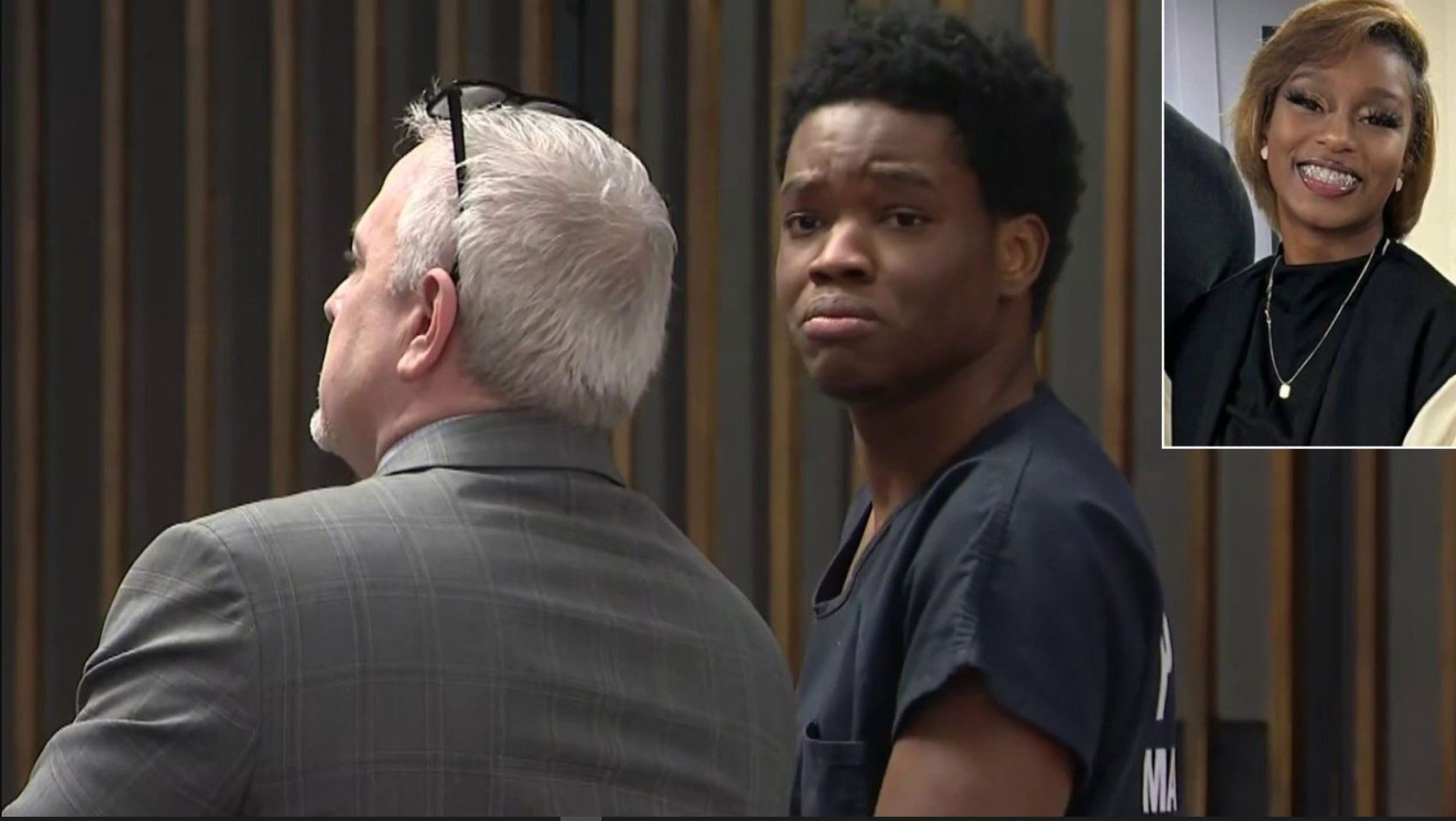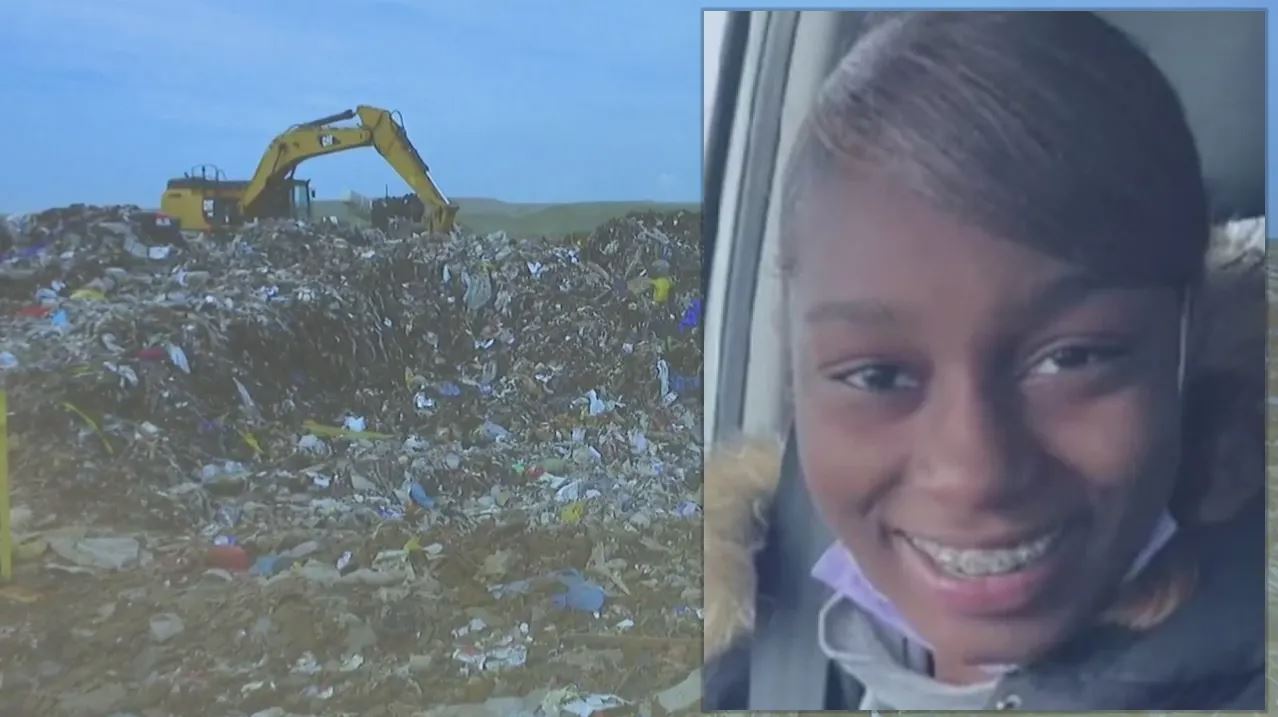Zion Foster Autopsy Report Implications in the Murder Trial
In the chilling case of Zion Foster, a 17-year-old from Eastpointe, the absence of an autopsy report has cast a shadow over the proceedings. Zion tragically disappeared under mysterious circumstances, and the ensuing investigation led to a murder trial for her cousin, Jaylin Brazier. The critical piece of evidence, the Zion Foster autopsy report, remains missing because her body has yet to be found despite extensive searches. This gap has left many questions unanswered about the cause and manner of her death, complicating the legal battle against Brazier.
Jaylin Brazier, 25, faces charges of second-degree murder and tampering with evidence. The prosecution claims that after a night of drug use went tragically wrong, Brazier disposed of Zion’s body in a dumpster, an act described by the prosecutor as treating her “like she was a piece of garbage.” The defense, however, paints a picture of panic rather than premeditation, suggesting that Zion’s death was a horrific accident rather than a calculated murder.
As the trial unfolds, the lack of physical evidence, particularly the Zion Foster autopsy report, challenges both the prosecution’s and defense’s ability to conclusively prove their cases. This has intensified the scrutiny of other forms of evidence presented, including conflicting statements by Brazier, digital evidence from cell phones and surveillance, and various witness testimonies. The community and Zion’s family are left grappling with the ambiguity and seeking justice in a case that has become as much about the interpretation of indirect evidence as it is about the pursuit of truth.
| Aspect | Description |
|---|---|
| Victim | Zion Foster, a 17-year-old from Eastpointe, disappeared under mysterious circumstances. |
| Key Missing Evidence | Zion Foster autopsy report is unavailable because her body has not been found, leaving many questions about her death unanswered. |
| Accused | Jaylin Brazier, 25, faces charges of second-degree murder and tampering with evidence. |
| Prosecution’s Claim | Brazier allegedly disposed of Zion’s body in a dumpster after a night of drug use that ended tragically, treated her “like she was a piece of garbage.” |
| Defense’s Argument | The defense suggests that Zion’s death was an accident and not premeditated murder, indicating panic on the part of Brazier. |
| Challenges in the Trial | The absence of Zion’s body and autopsy report complicates the ability of both sides to prove their cases, leading to reliance on indirect evidence like digital data and witness testimonies. |
| Community Impact | The community and Zion’s family are left with ambiguity and are seeking justice, focusing on the interpretation of available evidence. |
Contents
Background Information
Zion Foster, a 17-year-old resident of Eastpointe, Michigan, was known for her vibrant spirit and close-knit family ties. Her tragic disappearance and subsequent death have left a community in mourning and a family seeking answers. Zion had a particularly special bond with her cousin, Jaylin Brazier, who was often described as her favorite step-cousin. This relationship, built on what seemed to be trust and familial love, makes the circumstances of her disappearance even more heart-wrenching.

The events leading to Zion’s disappearance began on the last night she was seen alive, January 4, 2022. Zion reportedly spent the evening at Brazier’s house, a place she had visited numerous times before. However, what transpired that night turned from a casual visit into a nightmare. According to initial statements made by Brazier, the two were using drugs, which he later claimed led to Zion’s accidental death.
| Aspect | Description |
|---|---|
| Victim | Zion Foster, a 17-year-old from Eastpointe, Michigan, known for her vibrant spirit and close family ties. |
| Relationship with Suspect | Zion had a special bond with her cousin, Jaylin Brazier, who is now implicated in her disappearance and presumed death. |
| Last Seen | Zion was last seen alive on January 4, 2022, during a visit to Brazier’s house, a place she had visited often. |
| Incident Description | The visit turned tragic as it involved drug use, which Brazier later claimed led to Zion’s accidental death. |
| Community Impact | The disappearance and tragic circumstances have left the community and her family in mourning, seeking answers. |
The Prosecution’s Case
The prosecution, led by Wayne County Assistant Prosecutor Ryan Elsey, opened their case with a poignant depiction of Zion’s disappearance. In his opening statement, Elsey painted a grim picture, describing how Zion was allegedly transported from Brazier’s home: her lifeless body concealed in the trunk of his car and later discarded in a dumpster as if she were “a piece of garbage.” This narrative set a chilling tone for the trial, underscoring the brutality of the act and the disregard for Zion’s dignity.
Brazier’s account of the events has been anything but consistent. Initially, he denied that Zion was even at his house on the night she vanished. This story shifted dramatically over time. By January 19, 2022, Brazier admitted to police that they had smoked marijuana together before she died unexpectedly. The next day, his story morphed again, this time including the use of LSD, which he suggested was the cause of her death. These changing narratives, as highlighted by Elsey, suggest a pattern of deception aimed at misdirecting the investigation.
Perhaps the most damning against Brazier are the pieces of digital evidence compiled by the prosecution. Surveillance footage obtained from across the street from Brazier’s home shows two individuals arriving at and later leaving the property on the night of Zion’s disappearance. Additionally, cellphone data and text messages have been critical in establishing a timeline of events. Just before midnight on January 4, Zion’s boyfriend took a screenshot showing her phone’s location near Brazier’s house. At around 1:15 AM on January 5, Zion’s phone suddenly dropped off the cellular network, indicating that it was either turned off or destroyed.

Further complicating Brazier’s defense are his internet searches and the subsequent factory reset of his phone. Two days after Zion was last seen, Brazier performed a factory reset, erasing all data from his device. Moreover, his searches on Google about trash compaction and the capabilities of garbage trucks provide a harrowing insight into his attempts to ensure Zion’s body would never be found.
The prosecution faces significant challenges, chiefly the absence of Zion’s body. This crucial piece of evidence could potentially confirm the cause of death and validate or refute Brazier’s claims about the night Zion died. Without it, the case relies heavily on circumstantial evidence, including Brazier’s inconsistent statements and the digital trail he left behind. The trial thus hinges not only on the presented facts but also on the jury’s interpretation of these facts in the face of such uncertainty. The prosecution is tasked with meticulously piecing together this puzzle, aiming to provide justice for Zion Foster despite the hurdles posed by the physical absence of her remains.
| Aspect | Description |
|---|---|
| Prosecution’s Opening Statement | Ryan Elsey described how Zion’s body was allegedly transported in the trunk of Brazier’s car and discarded in a dumpster, emphasizing the brutality of the act. |
| Consistency of Suspect’s Statements | Jaylin Brazier’s account changed over time, from denying Zion’s presence at his house to admitting they used drugs together, which led to inconsistent narratives and suggested deception. |
| Digital Evidence | Surveillance footage, cellphone data, and text messages are critical, showing Zion’s last known location and the sudden loss of her phone signal. |
| Suspect’s Actions Post-Incident | Brazier’s internet searches related to garbage disposal and the factory reset of his phone indicate attempts to eliminate evidence. |
| Challenges for the Prosecution | The absence of Zion’s body is a major hurdle, making the case rely heavily on circumstantial evidence and the interpretation of Brazier’s digital trail. |
The Defense’s Argument
In the courtroom, the atmosphere was tense as attorney Brian Brown presented the defense’s opening statement. His narrative sharply contrasted with the prosecution’s, framing Jaylin Brazier’s actions as driven by panic rather than malice. According to Brown, the evening Zion Foster died was marked not by an intent to harm but by a sequence of poor decisions under stress. Brown emphasized that the sudden and unexpected death of Zion, presumably from complications related to drug use, had plunged Brazier into deep fear, leading him to make the fateful decision to dispose of her body in a manner he now deeply regrets.
The defense delved into various potential causes of Zion’s death to bolster their argument of accidental death. Brown suggested that Zion might have suffered from an adverse reaction to the drugs they allegedly consumed together, possibly marijuana laced with another substance or an overwhelming response to LSD. These scenarios, he argued, could have led to unexpected medical complications such as a seizure or a fatal respiratory issue. The defense argued that in the absence of an autopsy report and without Zion’s body, these possibilities could not be conclusively ruled out.
Moreover, the defense criticized the prosecution’s heavy reliance on circumstantial evidence. Brown pointed out the gaps in the digital evidence and the lack of direct proof linking Brazier to a premeditated murder. He highlighted the speculative nature of the prosecution’s case, arguing that it was built on assumptions and interpretations rather than concrete evidence. By emphasizing these points, the defense aimed to sow doubt in the minds of the jurors about the solidity and implications of the evidence presented against Brazier.
| Aspect | Description |
|---|---|
| Defense’s Opening Statement | Attorney Brian Brown presented a narrative emphasizing panic, not malice, as the driver behind Jaylin Brazier’s actions, framing the disposal of Zion Foster’s body as a result of fear following her sudden death. |
| Cause of Death Speculation | The defense suggested Zion’s death could have been due to an adverse reaction to drugs, potentially laced marijuana or a response to LSD, leading to a fatal medical issue. |
| Challenge to Prosecution’s Case | Brown criticized the prosecution’s reliance on circumstantial evidence, highlighting gaps in digital proof and the lack of direct evidence of premeditated murder. |
| Defense Strategy | The defense aimed to introduce doubt among jurors by focusing on the speculative nature of the prosecution’s case and the absence of conclusive physical evidence. |
The Search for Zion’s Body and Search Videos
Parallel to the courtroom battles, the search for Zion’s body unfolded as a significant endeavor that involved multiple law enforcement agencies and scores of volunteers. The focus of this exhaustive search was a landfill in Macomb County, where investigators believed Zion’s body had been disposed of after being placed in a dumpster. The search teams faced immense logistical challenges, navigating through tons of waste under harsh conditions, driven by the hope of finding evidence that could bring closure to the case.
The emotional toll on the search teams and Zion’s family was profound. Each day brought with it a mix of hope and despair—hope that they might finally recover Zion’s remains and despair with each passing day without a discovery. For Zion’s family, the search was not just about finding her body but about seeking justice and understanding the full circumstances of her tragic death. The lack of findings not only prolonged their agony but also left critical questions unanswered, impacting the trial and the family’s healing process.
The absence of Zion’s body significantly influenced the trajectory of the trial. For the prosecution, it meant relying on a narrative pieced together from digital traces and inconsistent testimonies, while for the defense, it provided a basis to challenge the sufficiency and interpretation of the evidence. Both sides recognized that the physical evidence of Zion’s body could decisively tilt the scales of justice, yet its absence left a gaping hole in the case.
The ongoing search and its outcomes thus remain a critical backdrop to a trial fraught with emotional and evidential complexities. As both the defense and prosecution navigate these turbulent waters, the community and Zion’s family wait with bated breath for answers that may finally come to light, bringing solace and justice for a young life lost too soon.
| Aspect | Description |
|---|---|
| Search Effort | Multiple law enforcement agencies and volunteers searched for Zion’s body in a landfill in Macomb County, facing logistical challenges and harsh conditions. |
| Emotional Impact | The search had a profound emotional toll on the teams and Zion’s family, oscillating between hope of finding her remains and despair with each unsuccessful day. |
| Impact on Trial | The absence of Zion’s body complicates the trial, with the prosecution relying on digital evidence and inconsistent testimonies, and the defense challenging the evidence’s sufficiency. |
| Critical Role of Physical Evidence | The potential recovery of Zion’s body could decisively influence the trial’s outcome, but its current absence leaves a significant gap in the case. |
| Community and Family’s Stance | The community and Zion’s family await the search outcomes, hoping for answers that could provide justice and closure for Zion’s tragic death. |
Legal Proceedings
The murder trial of Jaylin Brazier, accused in the death of his cousin, Zion Foster, marks a critical juncture in this high-profile case. The proceedings began with the careful selection of a jury, a process underscored by the complex nature of the evidence and the high emotions surrounding the case. During jury selection, Prosecutor Ryan Elsey focused on prospective jurors’ attitudes toward circumstantial evidence, a central element given the absence of Zion’s body. The selection process was meticulous, aiming to ensure a fair trial by establishing a jury capable of handling the weight of the decision without bias.
The trial itself is expected to last two to three weeks, involving detailed testimonies from forensic experts, friends, and family members, alongside extensive reviews of digital evidence. The prosecution and defense are set to present complex legal arguments regarding the interpretation of this evidence, making the jury’s role in deciphering these details crucial.

Jaylin Brazier’s legal troubles began prior to this trial. In March 2022, he was convicted of lying to the Eastpointe police during the investigation into Zion’s disappearance. His conviction, which led to a prison sentence of nearly two to four years, was pivotal; it established a pattern of deceptive behavior that the prosecution would later emphasize in the murder trial. Brazier’s parole in January 2023, just months before the trial, added another layer of complexity to the public’s perception of justice in this case.
| Aspect | Description |
|---|---|
| Jury Selection | Prosecutor Ryan Elsey concentrated on jurors’ views on circumstantial evidence during the selection process to ensure a fair trial, given the absence of Zion’s body. |
| Trial Duration and Content | The trial is expected to last 2-3 weeks, with testimonies from forensic experts, friends, and family, and extensive review of digital evidence. |
| Complex Legal Arguments | Both prosecution and defense will present intricate arguments regarding the interpretation of evidence, highlighting the jury’s crucial role in analysis. |
| Prior Conviction of Accused | Jaylin Brazier was convicted in March 2022 for lying to the police during the investigation of Zion’s disappearance, showing a pattern of deception. |
| Public Perception | Brazier’s recent parole, months before the trial, complicates public perception of justice in the case. |
The impact of Zion Foster’s case on her community extends beyond the immediate grief and outrage spurred by her tragic death. It has ignited a broader discourse on trust, justice, and safety in a community that must now grapple with the unsettling reality of a young life taken too soon, allegedly by someone within her own family. This case has also highlighted the challenges that arise in prosecuting cases involving circumstantial evidence and missing physical evidence, such as a body, which is often crucial for definitive forensic analysis.
As the trial progresses, its outcomes hold significant implications not only for those directly involved but also for the legal precedents concerning cases of this nature. The prosecution’s reliance on digital evidence and inconsistent statements, alongside the defense’s narrative of panic and accidental death, frame a legal battleground where the interpretations of evidence and the standards of proof are rigorously tested.
The ongoing nature of the trial means that the community, the media, and the legal world continue to watch closely. The resolution of the case will likely set a precedent for how similar cases are handled in the future, particularly those involving young victims and digital evidence. For Zion’s family, the trial is a quest for justice and closure, a chance to reconcile the painful loss with some form of legal resolution. For the community, it is a moment of reflection on the effectiveness and fairness of the criminal justice system.
Ultimately, the case of Zion Foster serves as a somber reminder of the fragility of trust and the profound impact of crime on families and communities. It raises critical questions about the adequacy of the legal system in delivering justice when conventional evidence is scant and the truths are buried as deeply as the secrets that led to such a tragic outcome. As the trial unfolds, all eyes remain fixed on the courtroom, awaiting a verdict that will hopefully bring peace to Zion’s grieving family and restore a sense of security to a shaken community.
Global News -Notti Osama Autopsy Reveals Details of Subway Stabbing
Dawn Brancheau Video A Tragic Encounter at SeaWorld
The Best Advice Original Video (El Mejor Consejo Video Original)
The Leatherface Mexican Video Original Its Impact on Society
Giovanna Plowman Original Video to Resurgence in 2023
Chico Pereira is Asleep Original Video (Chico Pereira Está Dormido Video Original)
Maria Camila Villalba Original Video on Safety and Digital